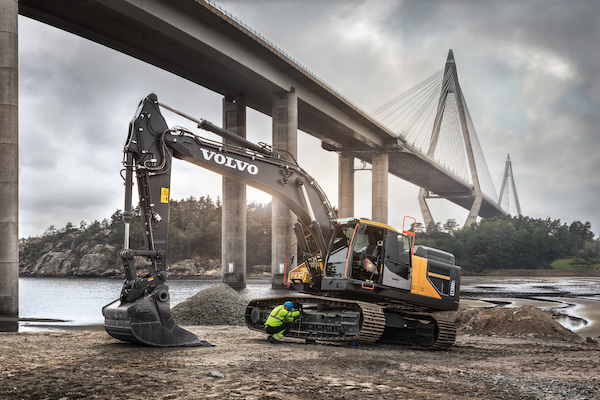How to keep your excavator’s undercarriage in top condition Look after your excavators undercarriage
Look after your excavators undercarriage
The criticality of a well-maintained undercarriage to the prolonged life of a crawler excavator cannot be reiterated enough.
Dedicating enough time to inspecting and maintaining your mission-critical crawler excavator’s undercarriage will ensure not only a longer machine life, but also increased uptime, which in any project – be it mining, quarrying or construction – is the difference between success and stagnation.
Not paying the necessary attention to the excavator’s undercarriage does not only potentially decrease the track’s lifespan, but it can also easily cost you valuable time and thousands of Rands. It is therefore important that fleet managers adopt a proactive approach to undercarriage maintenance and should not, as is often the case, wait to have excavator undercarriages serviced once there is a reason for concern.
A reactive vs proactive approach means downtime, and downtime suggests that your machine is unavailable for days or weeks at a time. Because businesses differ in how they operate, downtime, at the low end, can run into millions of Rands per hour on average.
Given that a crawler excavator’s undercarriage comprises a myriad of moving components, it needs to be maintained on a regular basis to ensure that it functions properly. This, in turn, improves operating efficiency and reduces running costs of machines. Wear parts in poor condition will reduce the machine’s service life and amplify the risk of breakdowns and unplanned downtime.
Keep in mind
Always remember that when you replace any part in the track system, for example, a chain, you must also check the wear of complementary parts in the system. To provide context, a worn sprocket may quickly wear down a new chain, which defeats the whole purpose of maintenance.
On one hand, if the undercarriage chain is worn out, you won’t be able to adjust it to the correct tension. On the other, if the chain is too tight, it will trigger damaging wear to the sprocket and the idler. If rollers are stuck, both the rollers and the chain will wear out at an alarming rate.
What it simply means here is that, it’s important to keep in mind that these wear parts don’t work in isolation; they work in tandem and should therefore get the same attention when it’s inspection and replacement time.
Five tips
Based on our experience working with undercarriages, we have put together five key tips that should be followed to ensure long life for your undercarriage:
- Remember to move the machine around and dig with the sprockets at the back and the idlers at the front. The idler comes with springs to shield it against pressure but working with it at the back will result in about 30% more wear on the sprocket and chain.
- When using attachments such as hydraulic breakers, the idlers should always be positioned at the rear. Hydraulic breakers by their very nature apply a different kind of pressure to the machine, so always keep the sprocket at the front and the idler at the back to avoid unnecessary wear to the sprocket, chain and gear box.
- Additionally, try to maintain low speed as much as possible when travelling to reduce possible wear to the undercarriage. A crawler excavator is not designed to travel between jobsites; if you need to travel long distances, load the excavator onto a trailer.
- Always prepare and flatten the ground on which the machine is working before you start to dig. This will help avoid uneven pressure to the various parts of the undercarriage.
- Inspect your track tension at least once a week to prevent premature wearing of components. Track tension shouldn’t be too tight, it must always stay a little slack. If the tension on the track is kept too tight, the pressure can result in unwarranted wear to the chain and sprockets.(This normally happens if the distance from the bottom chain to the frame on the undercarriage has been measured incorrectly. There are different measurements depending on the type of material, so technicians carrying out the checks should always refer to the operator’s manual.)
It’s therefore wise to contact your local Babcock branch to have the undercarriage of your Volvo Construction Equipment crawler excavator checked and measured regularly. Trained Babcock technicians will help you correctly determine when to replace your undercarriage components to ensure the lowest operating cost possible.
Looking for parts for your excavator? Click here to contact our parts department.

